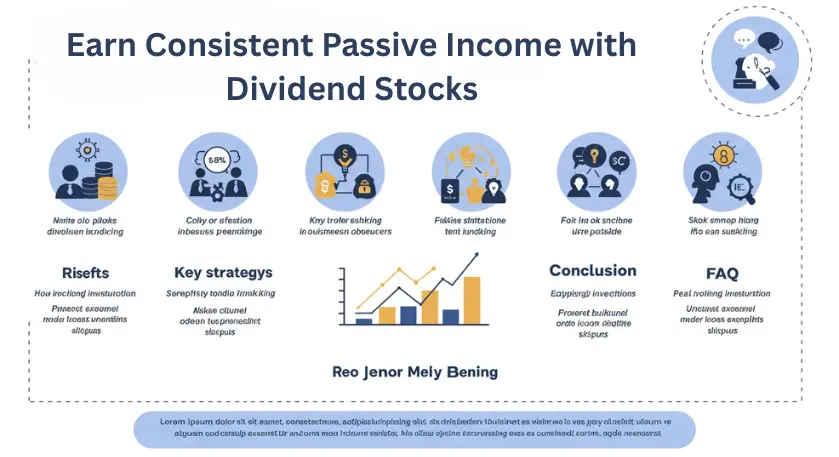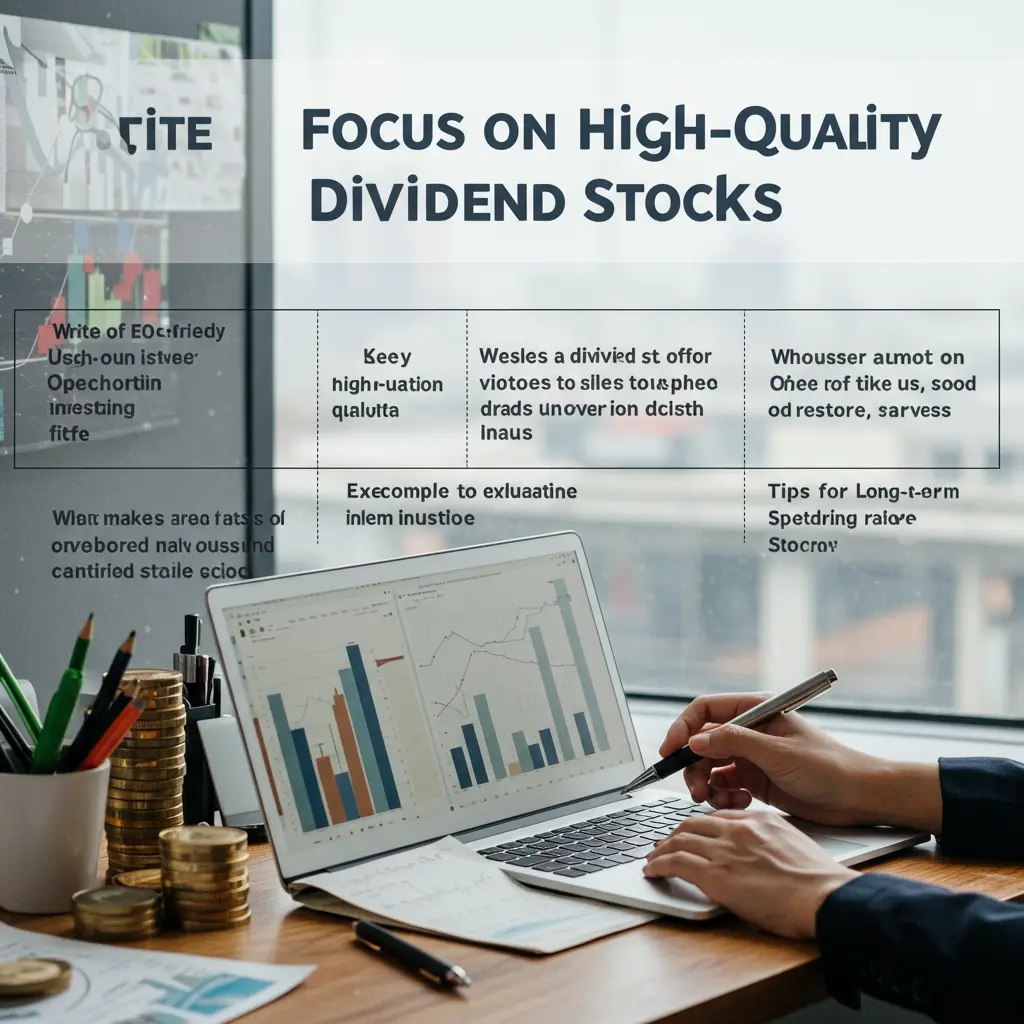Passive income is a dream for many investors, and dividend stocks offer one of the most reliable ways to achieve it. By investing in high quality dividend paying companies, you can earn regular income without actively working for it. In this article, we will explore how to build a portfolio that generates consistent passive income through dividend stocks.

Why Choose Dividend Stocks for Passive Income?
Dividend stocks provide several advantages for income focused investors:
- Regular Cash Flow: Companies pay dividends quarterly (sometimes monthly) providing steady income.
- Compounding Growth: Reinvesting dividends accelerates wealth accumulation.
- Lower Volatility: Dividend paying companies are often stable, blue chip stocks.
- Inflation Hedge: Many companies increase dividends over time.
Steps to Build a Dividend Income Portfolio
Focus on High-Quality Dividend Stocks

High quality companies usually have strong financial health, consistent earnings, low debt levels and a proven history of paying and increasing dividends. These businesses often operate in stable industries like consumer goods, utilities or healthcare, where demand remains steady even during economic downturns.
Look for companies with a sustainable payout ratio and a track record of at least 10 years of uninterrupted dividends. This approach ensures your income stream remains reliable, reduces the risk of dividend cuts and supports long term wealth growth through stability.
Not all dividend stocks are equal. Look for:
- Strong Dividend History: Companies with a track record of consistent payouts (e.g., Dividend Aristocrats).
- Sustainable Payout Ratio: Dividends should not exceed earnings (ideally < 60%).
- Growing Dividends: Companies that regularly increase payouts (e.g., Coca-Cola, Johnson & Johnson).
How to Earn Consistent Passive Income with Dividend Stocks
Diversify Across Sectors
Diversifying your dividend portfolio across multiple sectors is essential for reducing risk and ensuring consistent income. Relying on a single industry can expose your portfolio to sector specific downturns which may lead to dividend cuts or reduced earnings. By spreading investments across stable sectors like utilities, consumer staples, healthcare, financials and energy.
you create a balance that protects your income even if one sector underperforms. Different industries respond differently to economic changes. so diversification helps smooth out volatility. This strategy not only safeguards your passive income but also increases the potential for steady growth and long term portfolio resilience.
Avoid overexposure to one industry. Consider:
- Consumer Staples (Procter & Gamble, PepsiCo)
- Utilities (NextEra Energy, Duke Energy)
- Healthcare (Pfizer, AbbVie)
- Real Estate (REITs) (Realty Income, Simon Property Group)
Reinvest Dividends for Compounding
Reinvesting dividends is one of the most powerful ways to grow your passive income over time. Instead of withdrawing your dividend payments, use them to purchase additional shares of the same company or other quality dividend stocks. This process increases the number of shares you own which in turn boosts future dividend payouts a cycle known as compounding.
Over the years, compounding can significantly accelerate portfolio growth, even if you start with a modest investment. Dividend Reinvestment Plans (DRIPs) make this process automatic, cost effective and hassle free, helping you build wealth faster while maintaining a steady and growing income stream.
Monitor and Adjust Your Portfolio

Regularly monitoring and adjusting your dividend portfolio is key to maintaining a steady and reliable income stream. Economic conditions, company performance and market trends can all affect dividend payouts. Review your holdings at least twice a year to ensure each company still meets your quality and stability criteria.
Watch for warning signs like declining earnings, rising debt or dividend cuts. If a company’s fundamentals weaken, consider replacing it with a stronger alternative. Also rebalance your portfolio to maintain sector diversification and risk control. Staying proactive ensures your investments remain aligned with your income goals and long term growth strategy.
https://www.bankrate.com/investing/passive-income-ideas
Best Dividend Stocks for Passive Income (Examples)
| Stock | Dividend Yield | Sector |
| Johnson & Johnson (JNJ) | 2.8% | Healthcare |
| Procter & Gamble (PG) | 2.5% | Consumer Staples |
| Realty Income (O) | 5.5% | REIT |
| Verizon (VZ) | 6.5% | Telecom |
| AT&T (T) | 6.7% | Telecom |
Conclusion
By focusing on high quality dividend stocks, diversifying across sectors, reinvesting dividends for compounding and consistently monitoring your portfolio, you can build a resilient and steadily growing passive income stream. Quality stocks ensure stability, diversification protects against sector specific risks, reinvestment accelerates long term growth and regular reviews keep your investments on track.
This balanced approach not only safeguards your income during market fluctuations but also maximizes your wealth building potential over time. With patience, discipline and strategic adjustments, your dividend portfolio can become a reliable source of financial security and freedom for years to come.
Q. Why should I focus on high-quality dividend stocks?
A: High-quality dividend stocks come from financially stable companies with a history of consistent and growing payouts. They reduce the risk of dividend cuts and provide a more reliable income stream over the long term.
Q. How does diversifying across sectors help my portfolio?
A: Diversifying across sectors spreads your investments so that if one industry faces challenges, others can balance the impact. This reduces overall risk and helps maintain steady income.
Q. Why is reinvesting dividends important?
A: Reinvesting dividends buys more shares, increasing your future payouts through compounding. Over time. this can significantly grow your portfolio.
Q. How often should I monitor and adjust my portfolio?
A: It’s best to review your portfolio at least twice a year, checking for changes in company performance, dividend policies and overall sector balance.